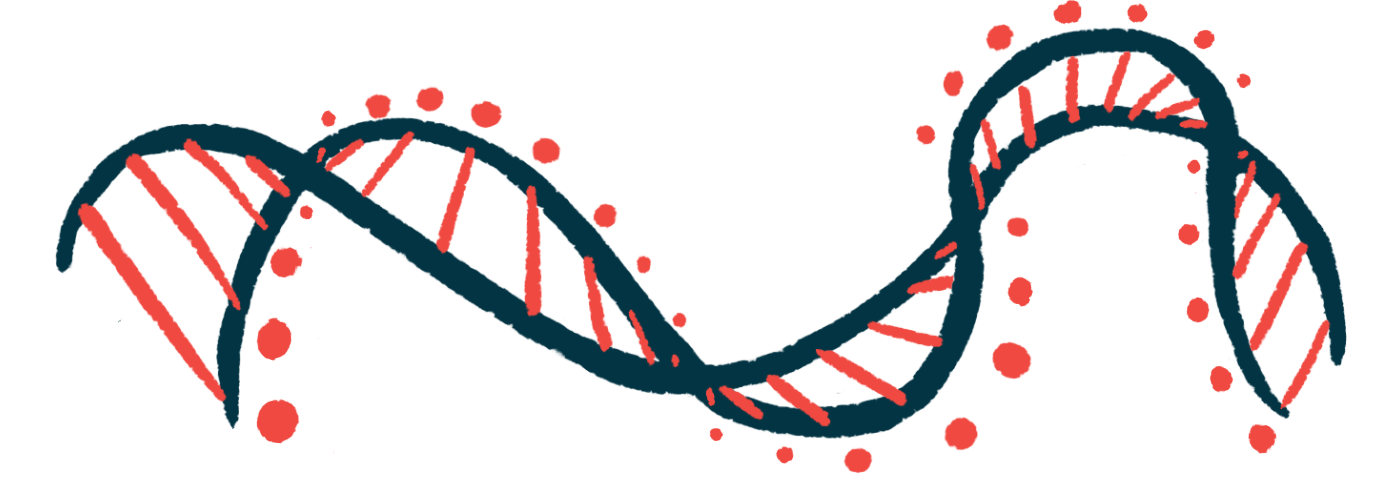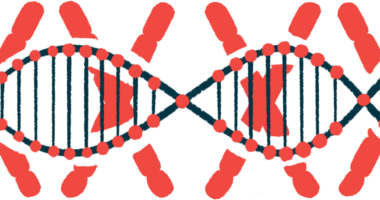GALGT2 Gene Therapy Helps Stabilize Muscle Function in DMD Boy
Higher dose resulted in improvements to 6MWT, NSAA score

Sarepta Therapeutics‘ investigational GALGT2 gene therapy helped stabilize muscle function when delivered at a higher dose to a boy with Duchenne muscular dystrophy (DMD), data from a Phase 1/2a clinical trial show.
The other trial participant, a boy with more severe disease, had a slight lung function improvement but otherwise no benefits after a lower dose of the therapy.
The study, “A first-in-human phase I/IIa gene transfer clinical trial for Duchenne muscular dystrophy using rAAVrh74.MCK.GALGT2,” was published in Molecular Therapy: Methods & Clinical Development.
DMD is caused by mutations in the DMD gene, which carries the information for making dystrophin, a protein that’s essential for muscle health.
GALGT2, developed by Sarepta in collaboration with Nationwide Children’s Hospital, belongs to a therapeutic class known as surrogate gene therapy.
Unlike other experimental approaches that deliver a portion of the DMD gene, this surrogate gene therapy (known as rAAVrh74.MCK.GALGT2) carries a copy of the GALGT2 gene — also known as B4GALNT2 — that’s been shown to induce production or alterations to proteins that inhibit muscular dystrophy from developing.
The therapy was deemed safe in a preclinical study at Nationwide Children’s Hospital. Further studies have shown that increasing GALGT2 levels prevented muscle injury in a mouse model of DMD. It also prevented decline in heart function as DMD mice aged. Studies in mice have supported its potential in limb girdle muscular dystrophy and congenital muscular dystrophy.
High, low dose response of GALGT2 gene therapy
Researchers at Nationwide Children’s Hospital and the Ohio State University describe the outcomes of two boys with DMD enrolled in a Phase 1/2a clinical trial (NCT03333590). The study assessed the safety and effectiveness of a lower and a higher dose of GALGT2, injected into both legs.
The first boy (age, 8.9) received a lower dose (2.5E13 vector genomes per kilogram, vg/kg) in each leg — total dose 5E13 vg/kg — established as minimally efficacious dose in nonhuman primates. The second boy (age, 6.9) was given a higher dose of 5.0E13 vg/kg in each leg, total dose 1E14 vg/kg.
In both cases, after the infusion, treatment with presdnisone or prednisolone at 1 mg/kg/day was kept for 50 days (first boy) and 63 days (second boy) then tapered to 0.75 mg/kg/day (first boy) or switched to Emflaza (deflazacort; 0.8 mg/kg day, second boy).
Muscle biopsies were taken at the study’s start (baseline) at three months (first boy) and four months (second boy), and repeated after six and 12 months for both after the therapy was administered. Compared to baseline, the GALGT2 gene activity levels increased at all time points.
Specifically, it increased by an average of six to eight times in the first boy and by 25 to 30 times in the second boy compared to baseline and healthy controls. This translated into an increase in muscle fibers positive for GALGT2 after four months in the first boy (7.4 times) and three months (11.69 times) in the second boy.
Performance in 6MWT, motor function with NSAA
Although the trial was not powered to assess clinical effectiveness, due to the low number of patients, the researchers assessed the boys’ performance in the 6-minute walk test (6MWT) as an exploratory efficacy measure and motor function with the North Star Ambulatory Assessment (NSAA). The 6MWT measures the distance a person can walk in six minutes on a hard, flat surface and is used as a measure of exercise capacity.
At baseline, the first boy, who had more severe motor impairments and received the lower dose, walked 357 meters and had a NSAA score of 18 out of 34 (higher scores indicate better function). At two years following the gene therapy’s infusion, his condition deteriorated and he lost the ability to walk without aid. His NSAA score was reduced (worsened) to 2.
Changes in muscle strength in the knees, as assessed by maximal voluntary isometric contraction testing (MVICT), showed no improvements.
The second boy, who received the higher dose of the gene therapy at a younger age, showed an improvement in his 6MWT from 405 to 478 meters. Also, his NSAA score increased from 20 at baseline to 23 two years after gene therapy.
The boy’s parents reported “increased activity and diminished fatigability in play and at school over the same period,” the researchers wrote.
He also showed improvements in knee extensor (by 24%) and flexor strength (31%) within 18 months. The improvements persisted in the right leg at two years.
No serious side effects were observed and neither boy showing signs of organ toxicity, including in the liver. Also, neither showed unexpected abnormalities in a blood analysis. Immune responses against the viral vector were not clinically significant and did not correlate to clinical or biochemical findings. Side effects related to the infusion (bleeding and bruising) resolved in a maximum of two months.
Overall, “these data suggest preliminary safety at a dose of 1E14 vg/kg and functional stabilization in one patient,” the study concluded.







